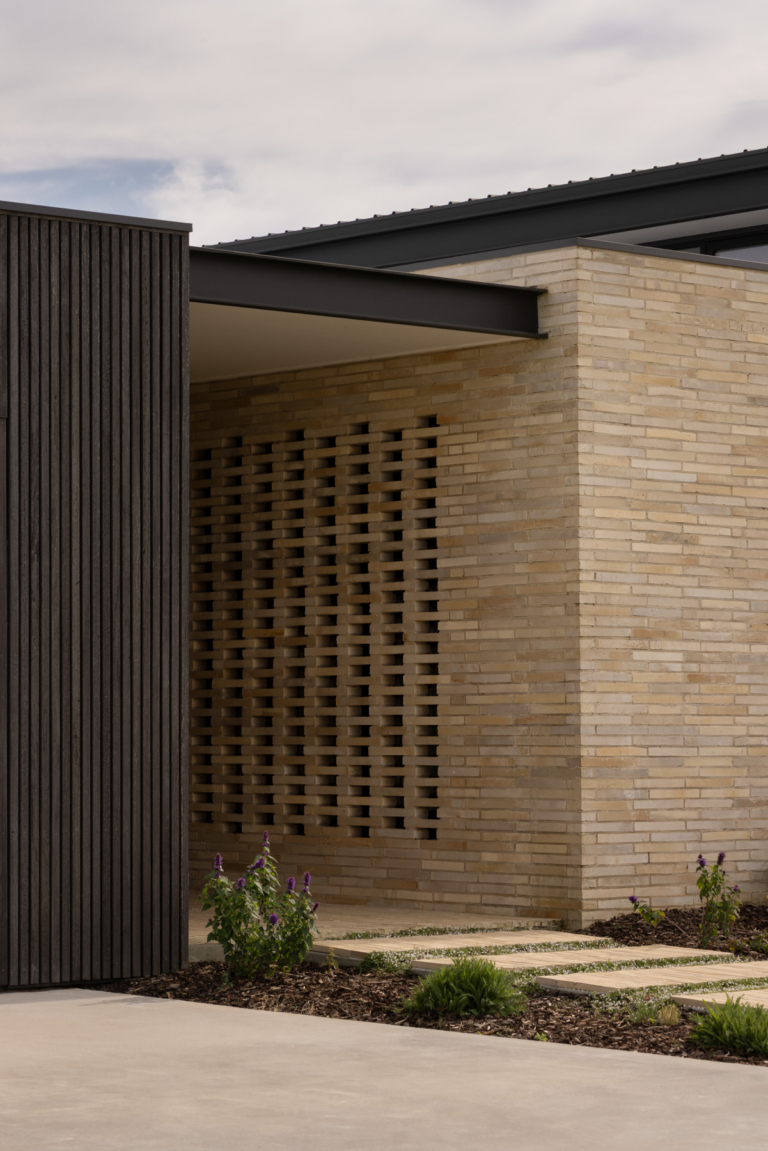
Bridging Boyd by Jolson
The respectful restoration of a landmark 1950s home creates a balance between Robin Boyd’s original vision and contemporary life through the celebration of structure, surface and materiality.
Having seen three iterations since the 1950s, the most recent transformation of the landmark Richardson House in Toorak, Melbourne, by Robin Boyd brings the past into the present and the future in a considered manner. Occupying the end of a cul-de-sac, the home was designed by Boyd between 1953 and 1955 and embraced the limitations of the site. This integral element of the design was lost over years of renovations, and when Melbourne-based architecture firm Jolson was presented with this challenge, the team of architects and interior designers crafted an approach with meticulous attention to detail inspired by Boyd’s vision. “Boyd’s original design principles were brave and robust and created a meaningful dialogue between the site and the landscape,” says Stephen Jolson, founder of Jolson.
“The original design was a very simple open plan, with the living portion being a large open terrace area on the bridge, allowing the occupants access to the landscape, an experience that seemed to have been lost by subsequent renovations,” continues Jolson. The rejuvenation of the home gave the team “an opportunity to create a new dialogue with this iconic building, using Boyd’s original principles as the impetus to celebrate what had been lost or discarded”.
Jolson first looked at how to establish a language between the home’s eras. “What we wanted to do was create a very simple dialogue between what was old, in term of Boyd’s structure, and what was new, in terms of being a contemporary family house,” he explains. Jolson turned to geometry and exposed structure as a language, as seen in Boyd’s original vision. “We chose to use bold geometry as well,” he says. “We added a huge circular terrace that we located outside the living room and, by using simple geometry, we created these very interesting thresholds where nothing new touches anything old.”
By moving the front door down to the narrow end of the home, Jolson introduced a series of walkway bridges that meander through the surrounding landscape
For instance, by moving the front door down to the narrow end of the home, Jolson introduced a series of walkway bridges that meander through the surrounding landscape. “It celebrates this idea of coming off the street and through the trees to the front door. As you walk in the door and along the lines of the home, you’ve experienced this whole connection to the landscape.”
The clients had lived in the home for two decades and were well aware of its magic, something Jolson wanted to explore further. “Our clients were on board with our design philosophy, which appealed to their own sense of connection and detail. That is why we went to extreme, meticulous detail in all aspects, from the macro-architecture right down to the micro. It breaks it down from this sort of very structural building into something finely detailed and tactile, and I think that came from understanding who our client was, what their expectations were and how they live.”
As the home is heritage-listed, the team had to adhere to strict guidelines. “We couldn’t change window frames because they were very much part of Boyd’s design.” One aspect that needed to be updated was the original timber window system to better suit Melbourne’s wet climate; the team redesigned all the windows in a robust steel. Previous finishes and floor materials were also reimagined but stayed true to Bridging Boyd’s design philosophy: paring everything back and utilising a simple material palette that reinterpreted Boyd’s design in a contemporary way.
For the home’s material selection, Jolson wanted to continue the dialogue with the landscape. “We thought, ‘What else could we bring in as an element that we could celebrate in the interior?’ And that was timber,” he says. Raw materials – including stone, timber and steel – were employed and highlighted. A case in point are the steel connection points underneath the house. “All of these points became an element that we wanted to expose, not conceal.”
Some modern conveniences like heating were also introduced but developed to work in tandem with the home’s original character. “We designed a customised hydronic heat system, which is a series of columns that run along and between each window frame vertically,” says Jolson. “We celebrated each of those vertical columns and used the idea of this repetitious structure of heating and lighting to heat the cool air that comes in through the glazing.”
With every point and turn, Bridging Boyd works to connect its owners back to the landscape. “You do not have any connection with your neighbours or anything else – the house is unique in every aspect,” says Jolson. By creating harmony between dwelling and landscape, the team at Jolson have honoured Boyd’s ideas of celebrating structure, space and materials while also creating a lasting gesture all their own.
Architecture and interior design by Jolson. Build by Krongold Construction Group. Landscape architecture by The Gardenist. Joinery by Ashwood Joinery.

![Book Flatlay Cover Front Transparent Trio[1]](https://d31dpzy4bseog7.cloudfront.net/media/2024/06/07080212/Book_Flatlay_Cover_Front_Transparent_Trio1.png)





























